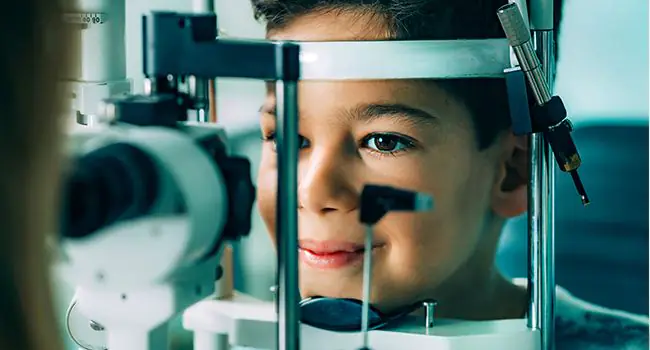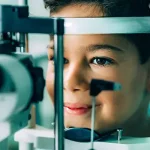Many children and newborn babies experience a number of eye problems. The sooner these problems are diagnosed and treated, the better. Paediatric ophthalmology focuses on paediatric eye problems and their treatment.
Paediatric ophthalmology helps to detect vision-related problems in children as early as possible. Eye defects, if not treated within six months of birth, may leave the child visually impaired for life. The reason for this is that the optic nerve is still developing during the first six months of life, and if the eye problems are not treated within that period, it may lead to permanent damage.
Similarly, young children can suffer from a range of vision problems without realising it. This is why it is very important to make paediatric ophthalmology a part of your child’s routine healthcare checkups.
What are the Common Eye Problems in Children?
There are different eye conditions commonly seen in children that can be diagnosed and treated on time with the help of paediatric ophthalmology.
1. Congenital Glaucoma –
Congenital glaucoma is a birth defect and is one of the main paediatric eye pain causes. The intraocular pressure increases as a result of a birth defect in the development of angle of the eye. The increased intraocular also leads to optic nerve damage and, if not treated earlier, may leave a lifelong defect.
This condition is detected between birth and three years of age. Child is bothered by light and has watery eyes. Paediatric ophthalmology uses a set of examinations to diagnose congenital glaucoma. Examination of the front part of the eye, fundus and tonometry are used as a part of the diagnostic procedure for congenital glaucoma.
2. Cataract –
Pediatric cataract is a condition in which the natural lens of the eye of the child becomes opaque due to accumulation of proteins inside it. This leads to hazy vision. Cataracts are usually known to be caused by growing age but may also present in children, known as paediatric cataracts. This condition can occur in newborn babies as well. Paediatric ophthalmology helps in the early detection of paediatric cataracts using examinations that may show missing or irregular red reflex.
3. Refractive errors –
Refractive errors in children lead to conditions like myopia (nearsightedness), hyperopia (farsightedness) and astigmatism.
These conditions can lead to poor or blurred vision. They can also lead to a condition called lazy eye. These changes cannot be prevented but can be detected early by a paediatric ophthalmologist. The doctor uses different exams to check the eyes and treat these conditions using corrective glasses or contact lenses.
4. Squint or Strabismus-
Squint or strabismus is a condition in which both eyes look in different directions. Squint is one of the most common eye problems in children and may lead to loss of vision in the affected eye if not detected on time.
This loss of vision is called amblyopia and, if not treated on time, may become permanent. Squint occurs in babies and younger children and should be detected early with the help of paediatric ophthalmology. Squint is sometimes congenital. It may also occur as a result of refractive errors in the eye. Paediatric ophthalmology uses eye examination and routine checkups for the early detection and treatment of squint.
Along with the above conditions, some other eye problems in children are retinopathy and drooping of upper eyelids. Blurry vision, clouding of vision, watery eyes and red eyes are some of the common child eye problem symptoms. It is important that you recognise these symptoms and seek a paediatric ophthalmologist for the early diagnosis and treatment for these conditions.
How often should you see a paediatric ophthalmologist?
Paediatric ophthalmologists are an important part of your regular health care checkup team for your children. Your child’s paediatrician will do a basic eye checkup at birth, but it is also necessary to get regular eye checkups done to maintain the good eye health of your child. Infants should have an eye checkup within 6 months of birth. After that, it is advised to get an eye checkup done every 1 or 2 years.
Paediatric ophthalmologists use different examinations to detect any eye problems early and provide the right treatment on time to avoid further complications. This makes paediatric ophthalmology a very important part of paediatric treatment.
Why Choose Centre for Sight?
At Center for Sight, we have highly reputed paediatric ophthalmologists working with us across all our branches. We can assure parents that their children’s needs will always be taken care of by our leading experts. With high-tech diagnostic tools and renowned surgeons and physicians on our teams, we can ensure you that your child’s timely treatment and care will always be a priority.
Article: Paediatric Ophthalmology: What does it mean?
Author: CFS Editorial Team | May 16 2021 | UPDATED 05:00 IST
*The views expressed here are solely those of the author in his private capacity and do not in any way represent the views of Centre for Sight.





